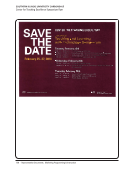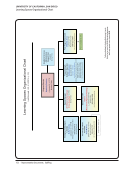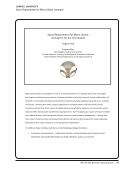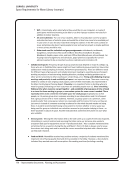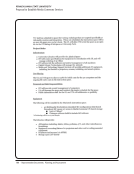38 · Survey Results: Survey Questions and Responses
Library West moved to 24/5 hours during the fall/spring semesters and after the remodeling of the Science Library this
summer, they will also move to a 24/5 schedule during the fall/spring semesters.
Our gate counts have remained about the same. We now have three building entrances—two into the learning
commons and one into the main library. We thought there might be a shift in which entrances were preferred by
students, but the largest gate count remains at the main library entrance.
Our library gate counts have remained about the same but we find gate counts to be an incomplete indicator of space
usage and have implemented the use of SUMA to help provide a more well-rounded picture of how fully occupied our
spaces are. Our web traffic has significantly increased in terms of page visits for those pages that deal directly with
providing information about our collaborative space and our presentation practice room. While our print circulation has
decreased, the circulation of equipment and room keys for individual study rooms has seen an increase. Head counts
during the late night hours prompted us to scale back our hours from closing at 2am to closing at midnight. We extend
our hours to 2am during exams. We did extend our lobby hours and access to our collaboration lab to 24/5.
Reference transactions have been steadily declining for years. Moving from a traditional reference desk/circulation desk
to a combined service desk with on-call reference providers did not change the pre-existing trends.
The addition of group study rooms in one building in 2007–2008 and the move to an online registration software
significantly increased traffic in the library and room use.
The health sciences library is a 24/7 facility effective this spring semester.
The Undergraduate Library is now open 24/7 during the academic year.
Two research commons units have expanded service hours. Library hours expanded during final exam period. Print
circulation transactions declined, e-resources usage continues to expand.
We don’t know how to assign causality in the last four categories, but there may have been some affect.
We have several co-curricular and curricular collaborative spaces. We know the addition of a Math Emporium
(computer-assisted math instruction targeted at remediation) has driven hundreds of students into the library.
We have some locations that provide new learning spaces exclusively, such as our Education Commons.
While reference transactions have decreased *dramatically* over time, instruction requests (provided by librarians) have
greatly increased.
Answered No N=2
We are currently (during 2013–14) collecting a variety of data (gate counts, circulation/reference transactions, etc.) and
will analyze it after the end of the year.
While the libraries collect these data, no specific efforts to link the data with the learning spaces has occurred.
Library West moved to 24/5 hours during the fall/spring semesters and after the remodeling of the Science Library this
summer, they will also move to a 24/5 schedule during the fall/spring semesters.
Our gate counts have remained about the same. We now have three building entrances—two into the learning
commons and one into the main library. We thought there might be a shift in which entrances were preferred by
students, but the largest gate count remains at the main library entrance.
Our library gate counts have remained about the same but we find gate counts to be an incomplete indicator of space
usage and have implemented the use of SUMA to help provide a more well-rounded picture of how fully occupied our
spaces are. Our web traffic has significantly increased in terms of page visits for those pages that deal directly with
providing information about our collaborative space and our presentation practice room. While our print circulation has
decreased, the circulation of equipment and room keys for individual study rooms has seen an increase. Head counts
during the late night hours prompted us to scale back our hours from closing at 2am to closing at midnight. We extend
our hours to 2am during exams. We did extend our lobby hours and access to our collaboration lab to 24/5.
Reference transactions have been steadily declining for years. Moving from a traditional reference desk/circulation desk
to a combined service desk with on-call reference providers did not change the pre-existing trends.
The addition of group study rooms in one building in 2007–2008 and the move to an online registration software
significantly increased traffic in the library and room use.
The health sciences library is a 24/7 facility effective this spring semester.
The Undergraduate Library is now open 24/7 during the academic year.
Two research commons units have expanded service hours. Library hours expanded during final exam period. Print
circulation transactions declined, e-resources usage continues to expand.
We don’t know how to assign causality in the last four categories, but there may have been some affect.
We have several co-curricular and curricular collaborative spaces. We know the addition of a Math Emporium
(computer-assisted math instruction targeted at remediation) has driven hundreds of students into the library.
We have some locations that provide new learning spaces exclusively, such as our Education Commons.
While reference transactions have decreased *dramatically* over time, instruction requests (provided by librarians) have
greatly increased.
Answered No N=2
We are currently (during 2013–14) collecting a variety of data (gate counts, circulation/reference transactions, etc.) and
will analyze it after the end of the year.
While the libraries collect these data, no specific efforts to link the data with the learning spaces has occurred.










































































































































